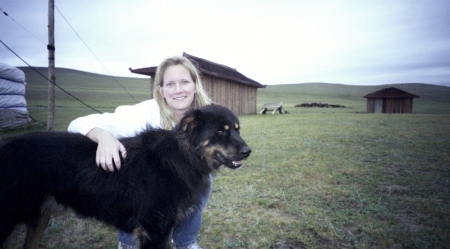My sister took me on the Trans Siberian Rail, from Beijing to Moscow.
That experience is fodder for a future blog entry (or series), where I hope I’ll be able to capture how truly life-changing it was.
But, I want to carve out our time in Mongolia separately.
Mongolia was unexpected, awesome, fascinating, and infecting. By infecting, I mean I “caught” an unexpected love for the country and its history and its people.
In preparing for the trip, I had read all kinds of accounts of the Trans Siberian experience itself, and I had read about the nomadic camp in the Gobi desert thatin which we’d be staying in a ger tent. So I had done my research, but I hadn’t really spent any time considering its people, history or culture.
After having “caught my infection” I am now an avid reader of Mongolian current events, and am fascinated by its history, ancient and modern.
First, our trip…
We exited the train at Ulan Baatar, Mongolia’s capital city, and were struck by the juxtaposition between being in the middle of nowhere, and being in a highly industrialized soviet city.
That is only the first of many contrasts we encountered: food that is a cross between Russian, Chinese and “nomadic”; a language that is written in Cyrillic (although the Mongols are highly resentful of their Soviet history); a poor economy, rich in minerals (see Soviet resentment); a people who are working to regain their pride, identity and nationalism, and yet trying to also enter the modern world culture and economy.
All of this is dizzying, and I found it addictive as well.
On our drive to the nomadic camp where we stayed in a ger tent (which is like a yurt) for a few days, our modern van broke down. So, we had to hike miles through the Gobi Desert, until we were rescued by carts and horses.
At the ger camp, we rode horses, watched cultural shows, feasted, drank fermented milk, and hiked in the desert. And we played volleyball, fell in love with the wild dogs, and flirted with the cowboys.
It was sad to say goodbye to Mongolia, it was, by far, the hardest place to leave on the whole trip.
When I got back to Chicago, I was still buzzing with my love for the place, and quickly read two books:
1. Jack Weatherford’s Genghis Khan and the Making of the Modern World 2. Michael Walter’s The Shadow Walker
Between these two books, you get an excellent idea of the ancient history of and the current situation in Mongolia.
The best thing about Weatherford’s book on Khan is that he focuses on more than the bloodthirsty conquering aspect of the historic icon. I finished his book with a real appreciation of why the Mongols are trying to resurrect him as a national hero. Of course, they want to identify with the man who helped the Mongols become a fearsome powerhouse (he conquered more in his reign than the Romans did in centuries). But, also, they want to celebrate the progressive man who promoted tolerance of religion and cultures, and who opened new trade and communication channels.
Walters’ fictional murder mystery was fun to read because Ulan Baatar and a ger camp make up the setting, and he does an entertaining job of bringing to light a lot of modern Mongolia’s quirks and challenges through the eyes of a foreign (British) detective.
I can’t honestly be sure if I would have enjoyed the book if I hadn’t been to Mongolia, or at least had an interest in it. But, as both are true, I turned the pages as excited to see how Inspector Nergui solved the crime as I was to read about the setting and surrounding events.
I think of Mongolia on a daily basis, since I have named my dog Gobi. She looks just like one of the dogs my sister and I met and adopted for the duration of our stay. Like my dog, my memories of Mongolia are never far from my heart.








